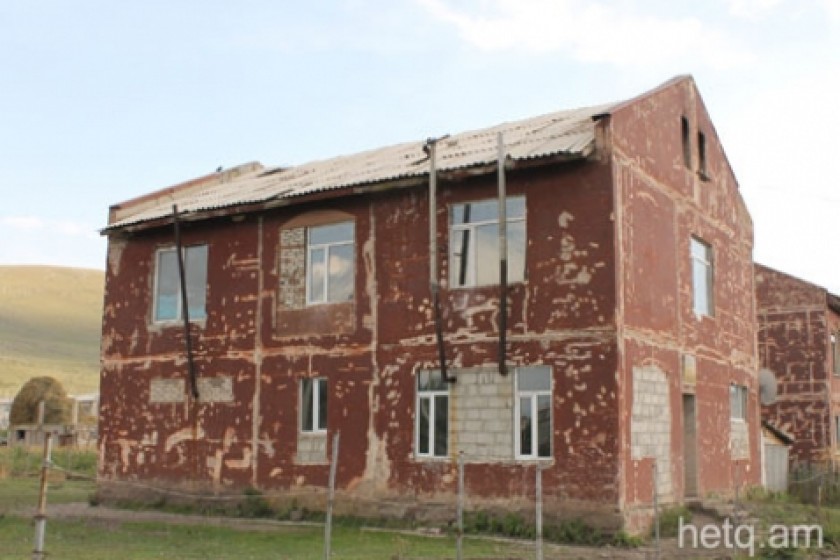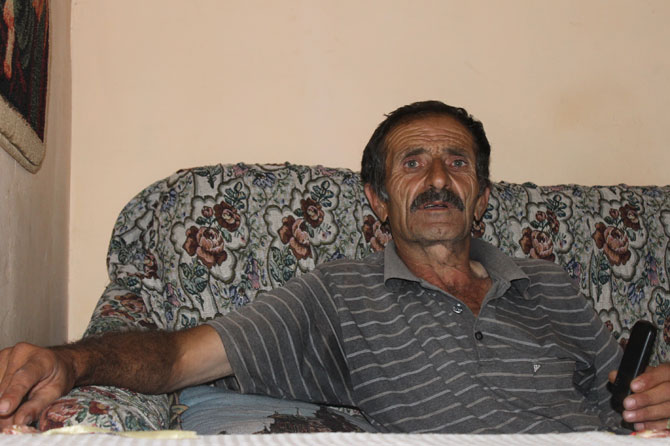
Javakhk Armenian Schools Need Armenian History Textbooks; So Why Isn’t Armenia Sending Them?
Students attending Armenian schools in Georgia’s Javakhk region aren’t taught Armenian history as a required course.
The subject is permitted to be taught on an elective basis. But, as we will see, many schools either don’t have qualified instructors or the textbooks to teach Armenian history properly.
Since it isn’t a required course, the Georgian education ministry doesn’t fund the allocation of Armenian history textbooks.
Hovhannes Mghdesyan, the school principal in Hokam, doesn’t hold the Georgian government responsible for these shortcomings as much as principals of majority Armenian schools, arguing that they aren’t the best of managers and thus miss out on the opportunities to teach Armenian history to those who want it.
Armenian history has been taught in the Hokam schools for the past thirteen years.

Principal Mghdesyan says that one year he included Armenian history in the school’s final exam and was later scolded for doing so by the Georgian government. Now, students taking the extracurricular course just receive a grade for the subject.
Thirteen years ago, when the Armenian high school opened in Hokam, it also served the neighboring villages of Azmana and Karsep. There is no Armenian school in the former and the Karsep Armenian school ends at the ninth grade.
Hokam and Azmana are mostly Georgian populated villages. Only twelve of the 120 households in Hokam are Armenian. In Azmana, twelve of the 51 households are Armenian. There are also Georgian schools in these villages
Principal Mghdesyan says it difficult to keep his school operating and that he has everything he needs except Armenian history textbooks. “I need nothing. But you can send us Armenian history textbooks if u=you can,” he says.
Armenian history classes are taught from the seventh grade and up. He says that three textbooks per class are enough. That’s a total of twenty textbooks.
On the way back to Georgia after having attended the recent Armenia-Diaspora Conference in Yerevan, participants from Javakhk underwent a thorough examination at the Georgian border. Pamphlets regarding the conference raised suspicions in the eyes of the Georgian customs agents. In fact, all printed material in Armenian, including the Bible and calendars adorned with the photo of the Armenian president are deemed suspicious.
Hetq contacted Armenia’s Ministry of Education to find out if it ever had allocated Armenian history books to schools in Javakhk.
Mher Ghazaryan, chief of staff at the ministry, responded that educational material earmarked for schools in Georgia where Armenian is the language of instruction must be approved in advance by the Georgian Ministry of Education and only then sent.
“For years, the Georgian education ministry has only approved Armenian language and literature textbooks. Textbooks for other subjects, including Armenian history, have been rejected by the ministry,” Ghazaryan says.
The official added that the Georgian ministry sustains its rejection of these textbooks by arguing that the Georgian education system has drafted a set of consolidated state criteria for the creation of primary school textbooks in Georgia and that Armenian history, as a subject, is included in the world history course taught throughout Georgian public schools.
Moreover, according to the Georgian education ministry, the country’s Armenian schools are allocated all the textbooks they need and that they are translated into Armenian for use in the classroom.
Many experts have long complained that Armenian history is presented in a distorted manner in these textbooks. This issue doesn’t seem to concern Armenia’s education ministry which is content to take the claims of their Georgian colleagues at face value.
The matter isn’t even discussed when representatives of the two countries’ education ministries meet.
In our inquiry to Armenia’s education ministry, Hetq also asked if they knew how big the need was in Javakhk for Armenian textbooks in the subjects of Armenian language, literature and history.
According to Mher Ghazaryan, the demand is evaluated by Armenia’s ambassador to Georgia and by the local Georgian educational resource centers.
Between 2009 and 2013, Armenia allocated 70,000 copies of educational material to Javakhk schools at a cost of some 60 million AMD (US$148,000).
Armenia’s education ministry provided Hetq with a list of the material sent.
Armenian history textbooks were never sent.
 Videos
Videos Photos
Photos




Comments (2)
Write a comment